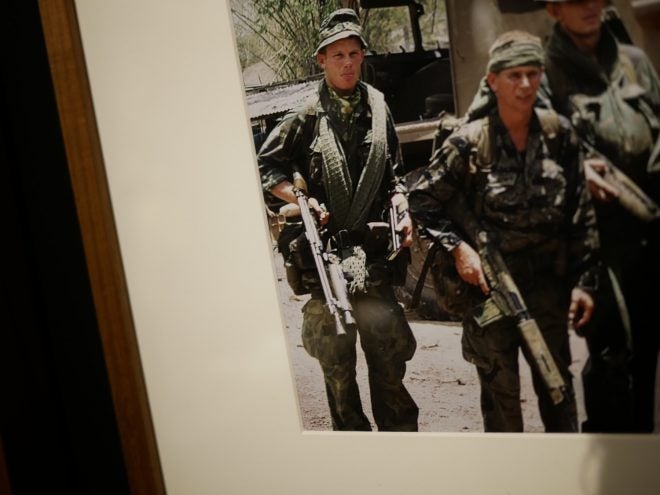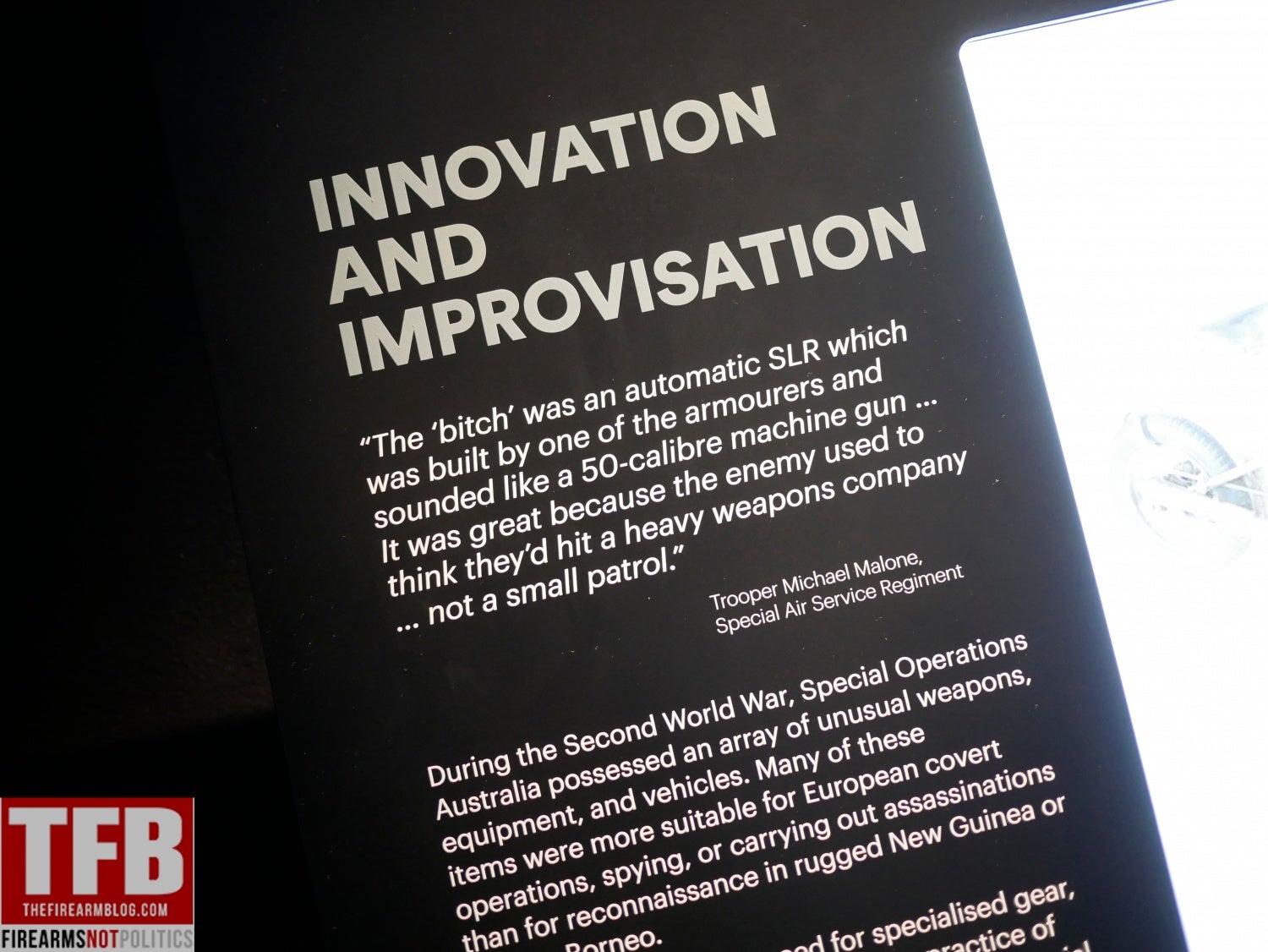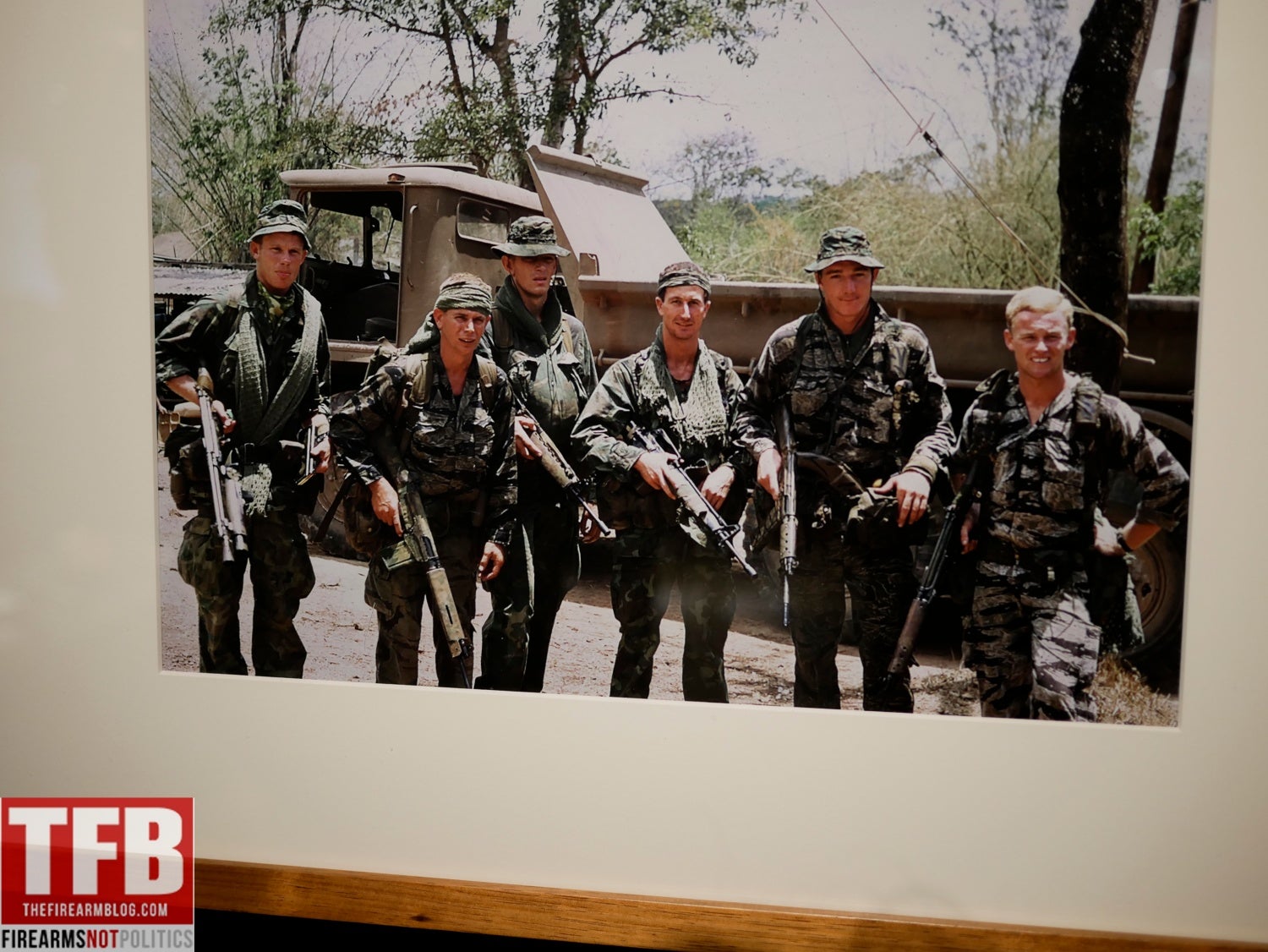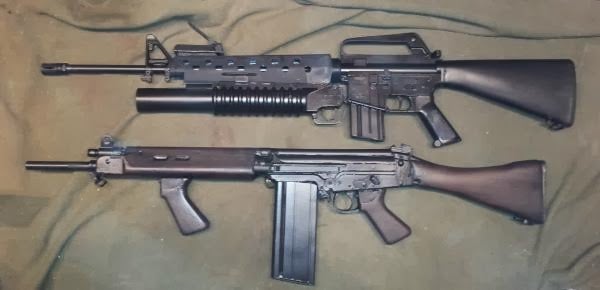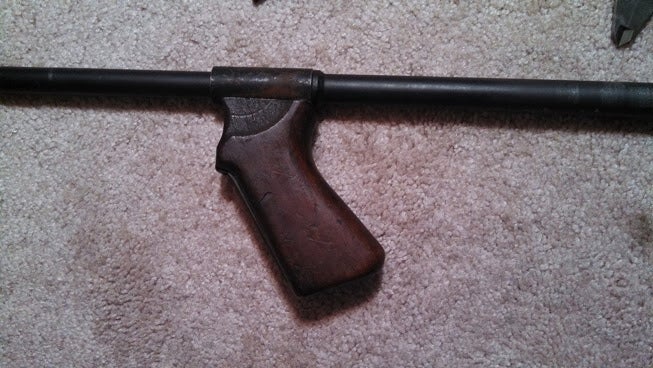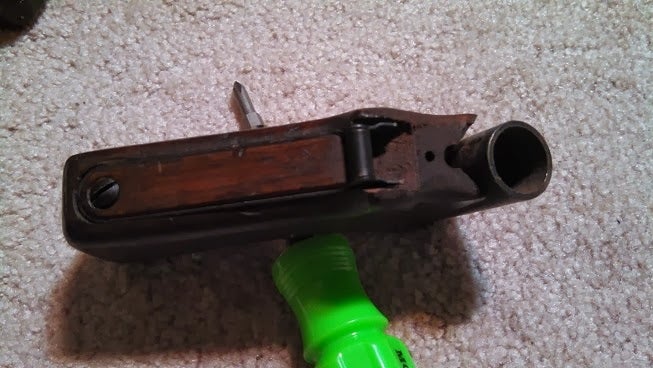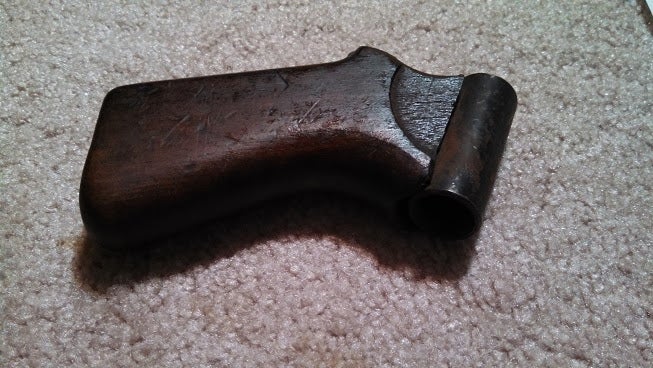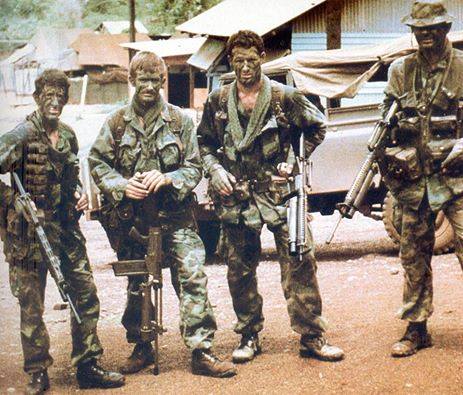Although the L1A1 SLR (FN FAL) service rifle served the Australian “Digger” faithfully for an extremely long period of time, infantrymen in the Vietnam War realized that the rifle could be “tweaked” to fit the combat that the soldiers had to fight in day after day. Undergoing field modifications that would be against regulations anywhere in the world, the troops did it anyways because it fit a necessary field requirement.
What happened was that a unit level armorer would take a standard issued SLR and chop the barrel down at the front sight post. In some cases, a cone-shaped flash hider might have been added to the exposed barrel and with a shortened stock it apparently was the L1A1-F1. Then the sear would be modified so that the gun could only shoot in fully automatic. A 30-round L2A1 magazine would be fitted to the gun in addition to sometimes a forward pistol grip and even an XM-148 grenade launcher. Essentially what you had was an automatic-only rifle that created an enormous ball of fire from the muzzle whenever a magazine was expended. It was called, “The Bitch”.
The October issue of “Vietnam Magazine” provides us with this description on page 58–
Australia s Special Air Service personnel modified their rifles, cutting the barrel off immediately in front of the gas block and mounting a U.S.-provided XM148 40mm grenade launcher. They also filed down the selector switches on their SLRs to make them firlly automatic. This modified automatic version was unofficially called “the Bitch;’because the bolt’s twisting motion and the barrel’s light weight made it all but impossible to hold the gun on target. Finally’ Australia produced a shortened version for jungle warfare designated the L1A1-F1. The Fl used the shortest stock available and a shortened flash suppressor, reducing the rifle’s overall lengthby 2.7 5 inches.
In addition, we also have these photographs posted on The FAL Files, in 2014, of a forward pistol grip that was floating around in Australia and purchased on Ebay. Really this is simply an original pistol grip that has been repurposed with a rod that fits over the barrel of an L1A1.
These are some images that have been floating around the internet and shared among numerous websites that feature L1A1s of varying stages of modification. Note that the grip from above is actually canted in some of the images.
The above photograph comes from yet another description of the modifications, but this from a Facebook page called All Things Military–
Upon deployment, the SAS Troopers were armed with L1A1s manufactured by the RSAF at Lithgow which is comparable in size to the US Rifle M14 and not well suited to jungle operations…
To overcome this these rifles were field modified, often from heavy barrelled L2A1 automatic rifles, with their barrels chopped off immediately in front of the gas block, and often with the L2A1 bipods removed and a XM148 40 mm grenade launcher mounted below the barrel. The XM148 40 mm grenade launchers were obtained from U.S. forces. For the L1A1, the lack of fully-automatic fire resulted in the unofficial conversion of the L1A1 to full-auto capability by simple filing of the selector, or by inserting a ‘foreign body’ to block the sear.
They would typically be equipped with 30-round magazines, either the straight version specifically made for the L2A1, or the slightly curved on used on the L4 Bren conversion. (As this mag was designed to feed downwards it often had an extra spring inserted to help feed upwards properly).
The barrels were chopped to make handling in the bush easier, and to increase the sound and flash signature when the weapon was fired. When a contact was initiated, the typical SASR 5-man patrol would lay down massive amounts of fire, the sound and flash of the chopped barrels adding to the ‘shock and awe’ effect, disorienting the VC or NVA and giving them the impression that they were in contact with a much larger force.
To the Troopers this modified L1A1 was simply called “The Bitch”…

Note the great variety of modifications on all these rifles, not just the L1A1s. But particularly prevalent are those forward grips attached to the stocks.
Yet another reference from a summary of a book (Sleeping With Your Ears Open-Patrolling With The Australian SAS) on the SASR during the Vietnam War can be found here–
Some comments made about the SLR (or L1A1) were quite illuminating. One common thread was that they would have their squadron armorers reinstall the bolt hold open and convert them to full auto. They also like to shorten the barrel and remove the flash hider. Their reasoning was that as most of their patrols were for for recon purposes, they tried to avoid contact with enemy forces, especially as they usually operated only as a four or five man patrol. In the event they were “bumped”, to use their term, they would open fire full auto, empty a magazine, and attempt to break contact while the enemy was still stunned. The combination of full auto fire, huge muzzle blasts and ear splitting reports would often make the enemy think they had blundered onto a full platoon or possibly company. One man made the comment that without the flash hider, the muzzle blast would cauterize the wound at 15 inches.
The reason for this whole contraption was that Diggers would issue the point men this modified rife so that when a patrol took contact in the closed in Vietnamese jungle, if that point man hadn’t already been killed, then his job was to fire his entire magazine from his “Bitch”, thus diverting the Viet Cong into thinking the Australian patrol had either much more firepower or at least more soldiers than were initially spotted.
Far fetched perhaps? Upon visiting the Australian War Memorial Museum in Canberra and the Lithgow Small Arms Museum in Lithgow, we’ve got at least two separate accounts of Australian veterans talking about the modifications in great detail. And apparently from these accounts, the “Bitch” actually did work, and made a tangible difference on the battlefield for the soldiers using it. As much as we’d love to see an actual example, it appears that no surviving “Bitch” is left after the war, the rifles being completely against regulations to begin with. Apparently, the modified rifles actually stayed in Vietnam, rotating from unit to relieving unit with old hats sitting the new Diggers down and telling them how to employ it.
 Your Privacy Choices
Your Privacy Choices
